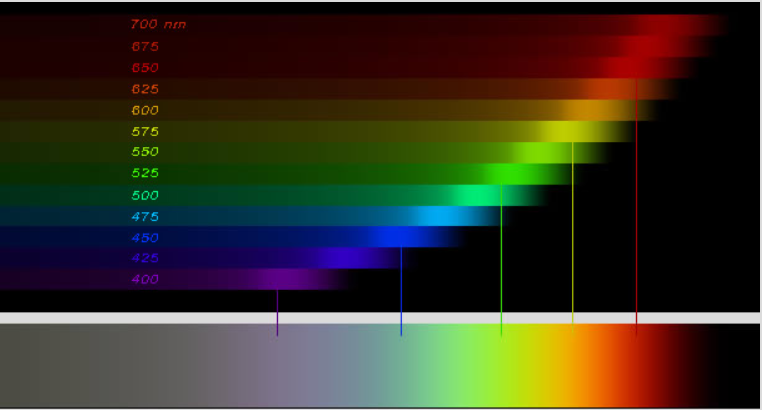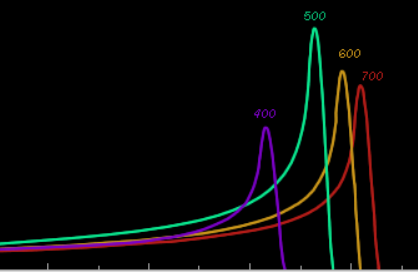Rainbow Colours
The Colors of the Rainbow: Exploring the Spectrum of Hues
Rainbows have long captivated our imagination with their vibrant display of colors. Traditionally, we describe the colors of the rainbow as red, orange, yellow, green, blue, indigo, and violet. However, our eyes can actually discern many more individual hues within this magical phenomenon.
A Mixture of Colors
Contrary to popular belief, the colors of a rainbow are not "pure." The classical rainbow is composed of overlapping bows of individually pure spectral colors. However, when we observe a rainbow, what we see are actually mixtures of colors. Each color in the bow contains longer-wavelength colors mixed in. For example, the blue color in the rainbow also contains significant amounts of green, and lesser amounts of yellow and red.
Unveiling the Rainbow's Intensity
To gain a deeper understanding of the rainbow's intensity, let's take an alternative look at its composition. When plotted, rainbow intensities versus angular distance from the rainbow center reveal interesting insights. The red color appears farthest from the center, while violet appears nearest. Peaks in intensity occur at angles of minimum deviation. The angular size of the sun contributes to broadening these peaks. However, there is also a smearing effect, as rays deviated more than the minimum deviation angle send light inside the bow. As a result, the light of any particular wavelength gradually diminishes towards the bow's center.
Overlapping Bright Edged Disks
To truly grasp the complexity of a rainbow's colors, it is helpful to envision them as overlapping bright-edged disks rather than narrow colored rings. The peak intensity for any given wavelength includes contributions from all longer wavelengths. This means that yellow is contaminated with reds, green with yellows and reds, and so on. As we move further inside the main bow, all these colors blend together, ultimately forming white. In contrast, the colors of the circumzenithal arc ice crystal halo, another atmospheric phenomenon, are purer and less affected by this mixing effect.
The Classical Rainbow and its Composition
The classical rainbow we commonly envision is formed by raindrops of sufficient size that diffraction effects are not apparent. When the sun creates this type of rainbow, geometric optics are used to trace rays through a spherical raindrop. The contributions at each deviation angle are then summed to compute the color cross sections. These cross sections are convoluted over the angular diameter of the sun. The resulting composite bow's colors are weighted by the spectral intensity distribution of sunlight at the Earth's surface.
Exploring the Richness of Rainbow Colors
While the traditional depiction of the rainbow includes seven colors, there is a wealth of hues waiting to be discovered within this natural wonder. By closely observing a rainbow, we can train our eyes to distinguish subtle variations in color intensity and hue. From pale pastels to vibrant shades, each rainbow offers a unique palette of colors that can captivate and inspire us.
The Influence of Light and Water Droplet Size
It is important to note that the size of water droplets plays a significant role in the appearance of a rainbow. Smaller droplets can produce more vivid and saturated colors, while larger droplets may result in a less intense display. Additionally, the angle at which sunlight interacts with the water droplets affects the shape and visibility of the rainbow. These factors contribute to the infinite variety of rainbow colors we can encounter.
Beyond the Visible Spectrum
While we primarily perceive rainbows within the visible spectrum of light, there is a whole world of colors beyond what our eyes can see. Ultraviolet and infrared light also play a role in atmospheric optics, but they remain invisible to us without specialized equipment. Exploring these unseen colors opens up new avenues for scientific research and artistic expression.
Rainbows in Culture and Symbolism
Throughout history, rainbows have held significant cultural and symbolic meanings. In various mythologies and folklore, rainbows have been seen as bridges between realms, symbols of hope, and representations of divine messages. They have inspired artists, poets, and dreamers across cultures and continue to evoke a sense of wonder and awe.
The Magic of Rainbows
In conclusion, the colors of a rainbow are a mesmerizing blend of individual hues that create a stunning visual spectacle. From the classical depiction to the intricate details of color mixing, rainbows offer us a glimpse into the fascinating world of atmospheric optics. Whether we observe them after a refreshing rain shower or encounter them in our imaginations, rainbows remind us of the beauty and complexity that surround us in nature. So, the next time you witness a rainbow, take a moment to appreciate the multitude of colors it holds and the magic it brings to our lives.

Traditionally, the rainbow's colours are described as red, orange, yellow, green,blue, indigo and violet. In fact, our eyes can discern many more indivual hues.
Rainbow colours are not "pure". The classical rainbow., is made up of overlapping bows of individually pure spectral colours. Only a few examples are shown at left.
The final colours that we see are mixtures. Any one colour of the bow has longer wavelength (towards red) colours mixed in. Look for instance at the blue; there are significant amounts of green present and lesser amounts of yellow and red.
Compare this classical bow with one made from small raindrops.

An alternative look. At left are plotted rainbow intensities versus angular distance from the rainbow center. Red is farthest from the center and violet nearest.
The peaks are at angles of minimum deviation. The angular size of the sun broadens each peak but there is a more severe smearing effect. Rays deviated more than the minimum deviation angle send light inside the bow and so the light of any particular wavelength falls off slowly towards the bow's center. Think of rainbows more as overlapping bright edged disks rather than narrow coloured rings. The peak intensity for any wavelength has mixed in with it contributions from all the longer wavelengths. Yellow is contaminated with reds, green with yellows and reds and so on. Well inside the main bow all these colours mix to form white. Rainbow colours are not pure. Those of the circumzenithal arc ice crystal halo are purer.
.
The classical rainbow is one made from sufficiently large drops that diffraction effects are not apparent (when made by the sun - but see this bow). The colour cross sections at top were computed using geometric optics to trace rays through a spherical drop and then summing the contributions at each deviation angle. Results were convoluted over the angular diameter of the sun. The composite bow's colours were then weighted by the spectral intensity distribution of sunlight at the earth's surface.
Note: this article has been automatically converted from the old site and may not appear as intended. You can find the original article here.
Reference Atmospheric Optics
If you use any of the definitions, information, or data presented on Atmospheric Optics, please copy the link or reference below to properly credit us as the reference source. Thank you!
-
<a href="https://atoptics.co.uk/blog/rainbow-colours/">Rainbow Colours</a>
-
"Rainbow Colours". Atmospheric Optics. Accessed on December 3, 2024. https://atoptics.co.uk/blog/rainbow-colours/.
-
"Rainbow Colours". Atmospheric Optics, https://atoptics.co.uk/blog/rainbow-colours/. Accessed 3 December, 2024
-
Rainbow Colours. Atmospheric Optics. Retrieved from https://atoptics.co.uk/blog/rainbow-colours/.